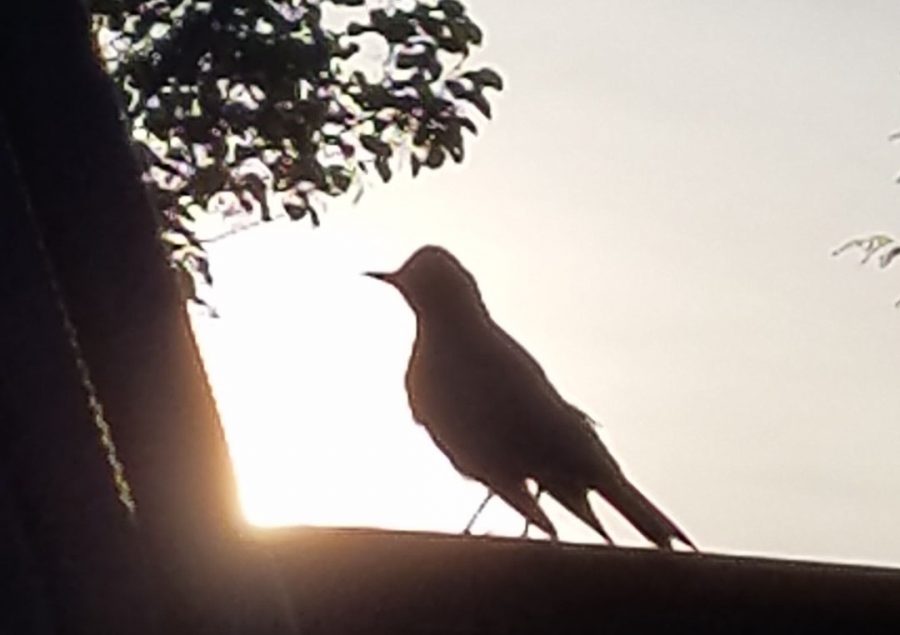This Disease Is For The Birds!
Humans are not the only ones continuing to combat disease. Something is running “afowl” with birds, too!
September 3, 2021
In what appears to be the final dregs of the COVID-19, another illness has risen from the depths. However, this time, it doesn’t affect humans: It’s for birds.
Avid bird-watchers, bird-feeders, and bird-lovers in general have likely been aware of the most recent threat to songbirds’ health that is continuing to fester stubbornly in its place. Indiana is just one of multiple states facing this disease, with the spread traveling all the way from New Jersey, Delaware, Maryland, West Virginia, and Virginia, to Pennsylvania, Ohio, Tennessee, Kentucky, and even Florida.
“No, I am not aware of it. I never heard of it,” admits Kayla Coffey, a sophomore. After a brief search on the topic, she adds,”Apparently, it’s making birds lose their eyesight–and causing other issues.”
In Pennsylvania, at least 12 species of songbird have been affected, including the following: blue jays, brown-headed cowbirds, European starlings, house finches, house sparrows, red-bellied woodpeckers, common grackles, American robins, eastern bluebirds, northern cardinals, and Carolina wrens. More often than not, the youngest of these species have been affected, with the first reports for the disease were back in May, first spotted in Washington, D.C. First reports started arriving in Indiana during late May. However, not much is truly known about the disease.
According to the Indiana Department of Natural Resources website, “In late May, DNR started receiving reports of sick and dying birds from Monroe County with neurological signs, eye swelling, and crusty discharge around the eyes.” The site also posted this statement: “Earlier this summer, DNR recommended a statewide moratorium on bird feeding to slow the spread of the still-undetermined illness that is killing birds across our state.”
No known cause has been discovered as of yet. Reported so far is that the illness is not caused by any of the major known bird diseases, such as House Finch eye disease, avian influenza, Trichomonas parasites, salmonella, and West Nile. Symptoms have been observed to be issues with the eyes, and neurological problems. The most common eye issues include swelling, crust or pus in the eyes, and corneal lesions, and noticeable neurological signs include seizures, head tremors, inability to stand or leg paralysis, and increased vocalizations. In Indiana alone, DNR biologists believe there have been more than 500 cases in 72 counties that involve the very specific symptoms of this illness, and more than 3,400 reports of sick or dead birds have been reported.
“DNR staff collected samples and submitted them to the Indiana Animal Disease Diagnostic Laboratory earlier this summer,” the site went on to note. “DNR received final laboratory diagnostic results which ruled out common bird diseases…but the cause or transmission of the disease outbreak is currently unknown.”
Despite the overwhelming number of symptoms, reported cases, and states affected, duly noted is that not only do most of these affected songbirds not pass away, but since mid-July, it appears that instances of the illness have been decreasing in number. It is believed that the disease poses no threat to people—at least no imminent threat—and likely poses no threat to the population of a specific bird species, or to the overall population of birds in Indiana.
Coffey reacts to this information. “[I’m worried about] nothing really–unless it spreads, and it causes the animals that eat the birds to catch it,” she begins. “The songbird population will definitely go down, especially if it spreads through water supplies, and if these birds become more likely to be eaten due to these issues that the disease is causing.”
To those that enjoy bird-watching, keep an eye out for any of these sick birds, so they may be able to get the care they require. To bird-feeders, check if counties nearby or are presently in are affected by the illness. If bird feeders are permitted to be out, make sure to clean the bird cleaner somewhat frequently to prevent any possible spreading of the disease. Finally, to all the bird-lovers out there, keep on the lookout for more information about the disease, as well as for sick or injured birds.
“[The disease can cause problems] if it may spread to other birds and animals,” Coffey learns from her research. “My cats like to eat birds, so it scares me a little bit!”
Maybe not everything should be for the birds.








